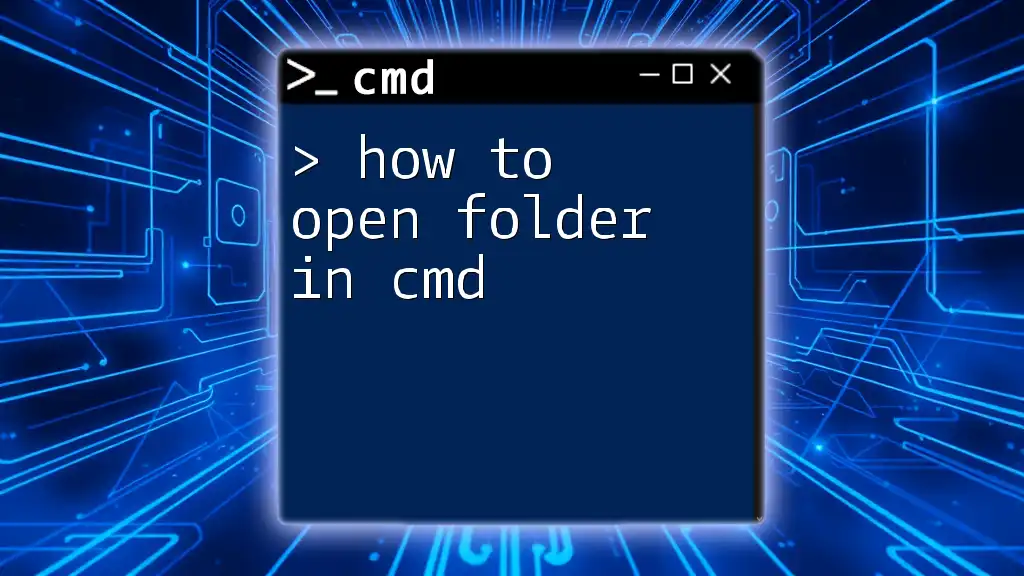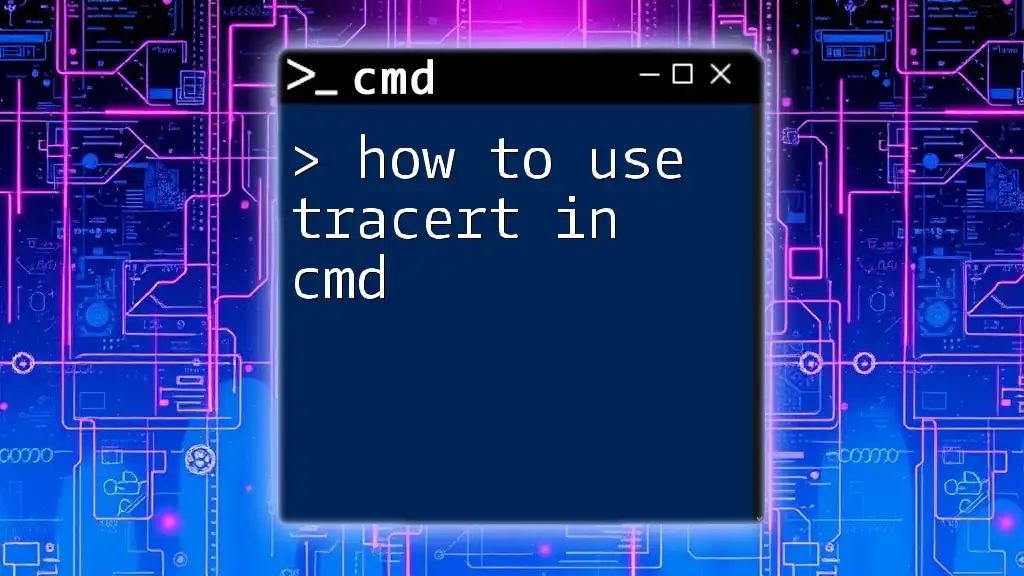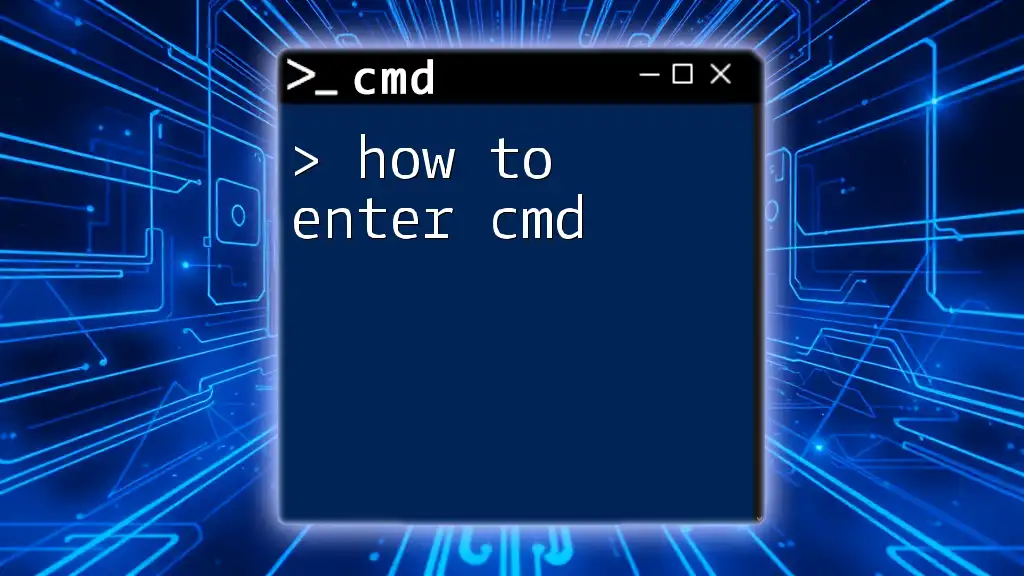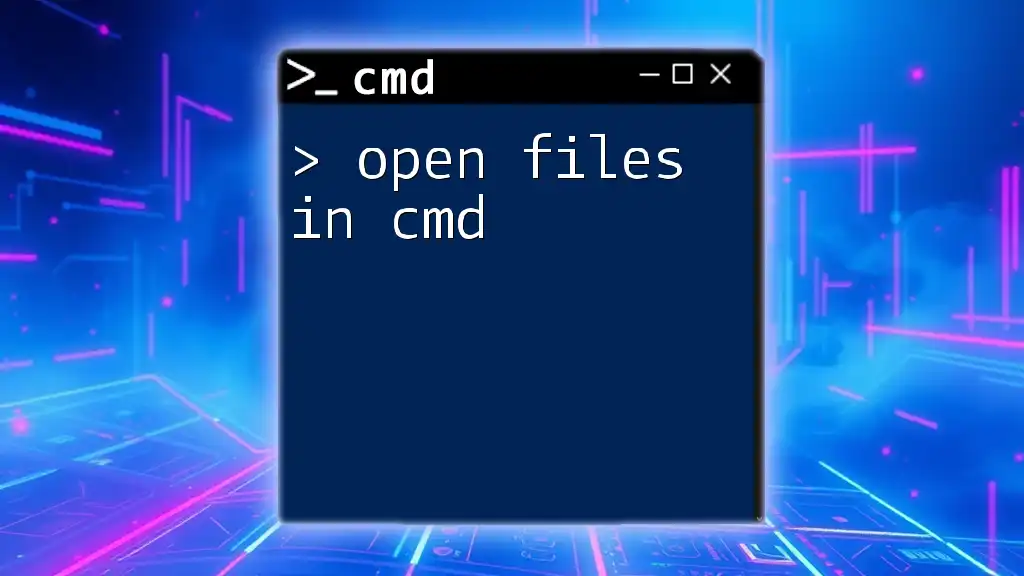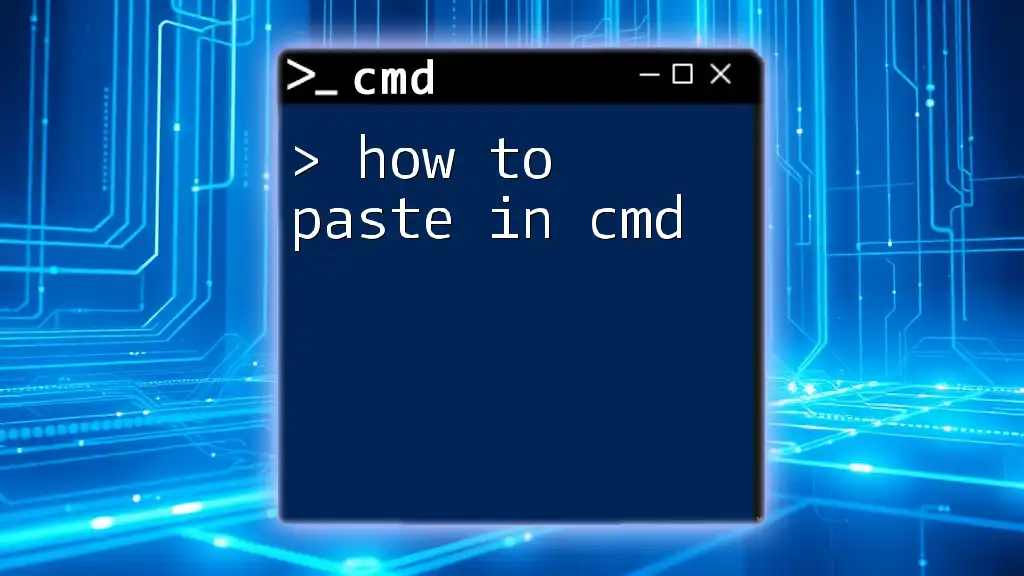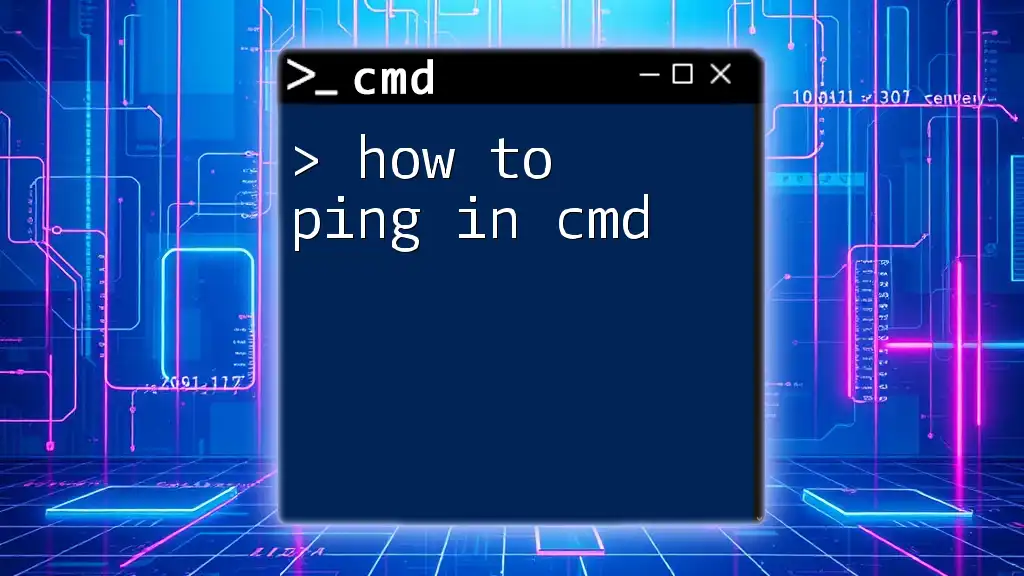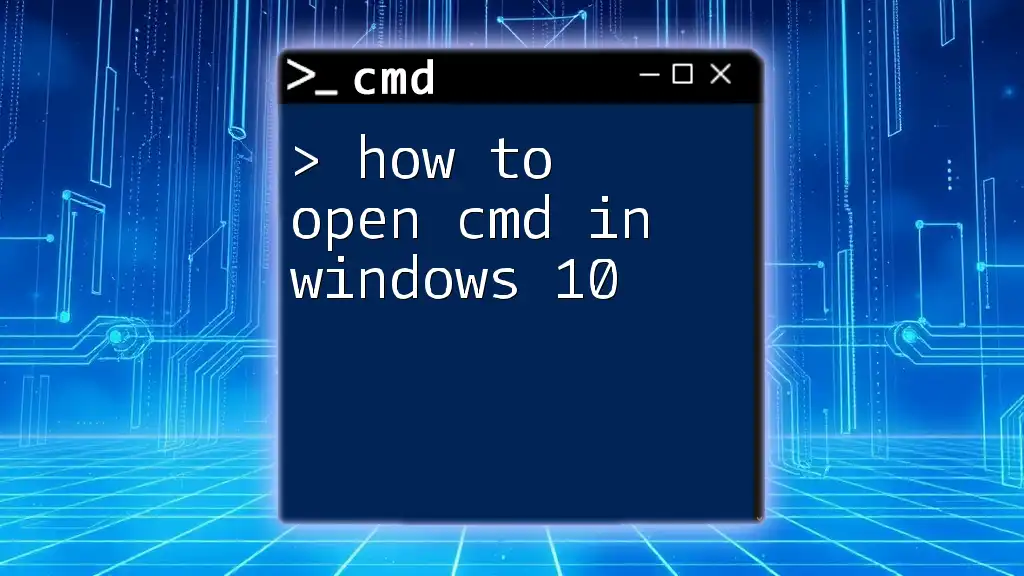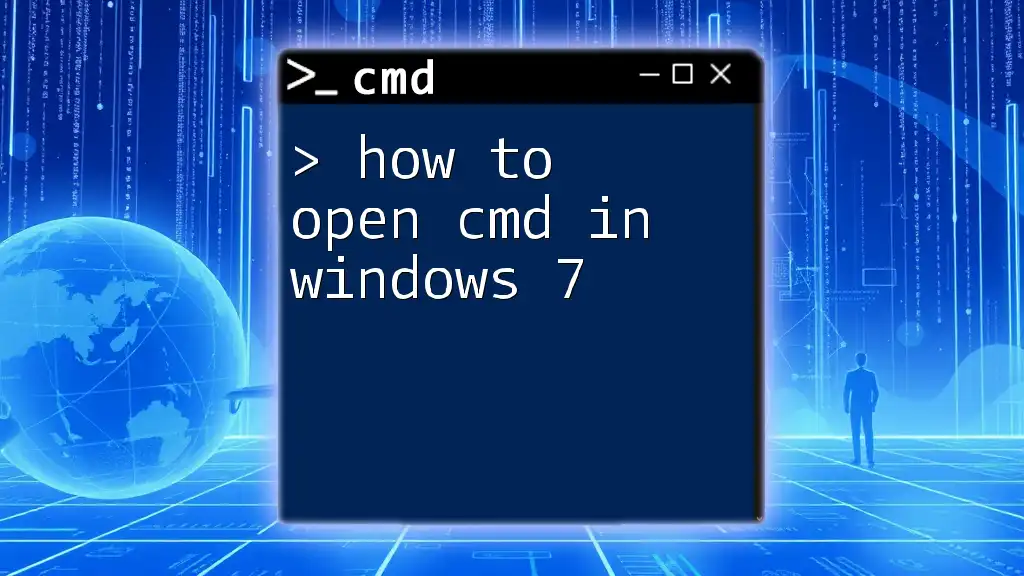To open a folder in Command Prompt (cmd), you can navigate to the desired directory using the `cd` command followed by the path to your folder.
Here’s an example:
cd C:\path\to\your\folder
Understanding the Command Prompt
What is CMD?
The Command Prompt (CMD) is a powerful command-line interpreter in Windows operating systems. Unlike the graphical user interface (GUI), CMD allows users to directly interact with the system through text commands. This can significantly enhance file management and system navigation efficiency. Understanding CMD helps users perform tasks that might take longer through the GUI, giving them greater control over their file systems.
Navigating to Folders
In CMD, navigating through folders is paramount for executing commands. The file system structure is hierarchical, with drives and directories. Knowing how to maneuver through this structure allows you to access documents, programs, and other resources effortlessly, making it crucial for anyone looking to master CMD.
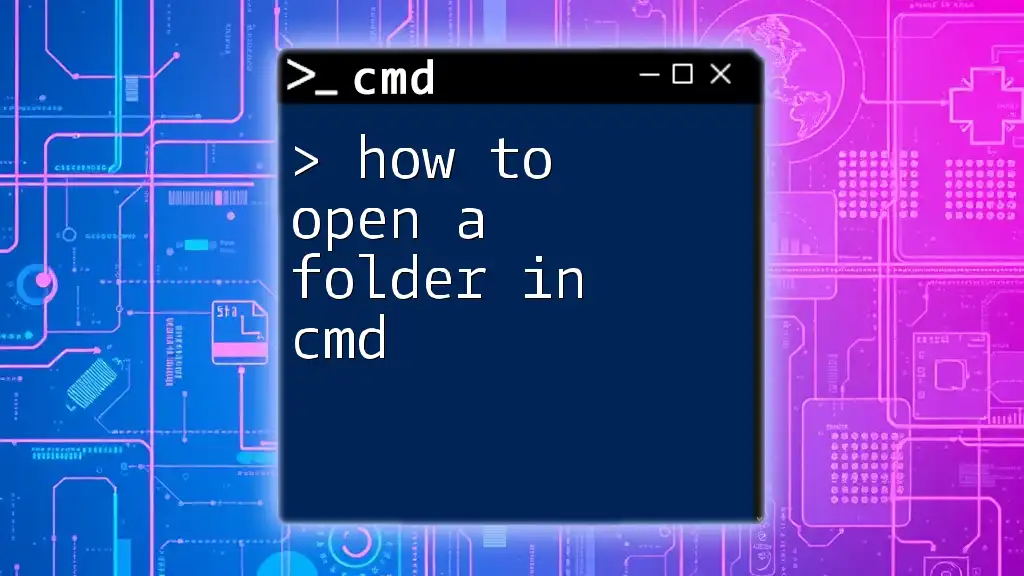
How to Open a Folder in CMD
Opening CMD
Before you can open a folder in CMD, you need to access the Command Prompt itself. Here’s how to do it depending on your Windows version:
- Windows 10/11:
- Press `Win + R`, type `cmd`, then hit `Enter`.
- Alternatively, you can search for "cmd" in the Start menu.
Basic Command to Open a Folder
To open a folder in CMD, the primary command you'll use is `cd`, which stands for "Change Directory." This command is fundamental for navigation.
Syntax:
cd [path]
Here’s how it works: To open the "Documents" folder, for example, you would type:
cd C:\Users\YourUsername\Documents
Replace `YourUsername` with your actual Windows username. After pressing Enter, your command prompt will indicate that you are now inside the Documents folder.
Opening Folder in CMD with Full Path
Using the full path syntax allows you to specify exactly where the folder is located, regardless of your current directory in CMD. This is particularly useful when navigating complex directory structures.
For example, to navigate to the "Program Files" folder, you would input:
cd "C:\Program Files"
Using double quotes is important when the path contains spaces, allowing the command to process it correctly.
Opening a Folder from a User Directory
Utilizing environment variables can simplify the process of accessing frequently used directories. The `%USERPROFILE%` variable points to the current user's profile directory.
For instance, typing the following command will take you directly to your Documents folder, irrespective of your username:
cd %USERPROFILE%\Documents
How to Open Folders Using CMD Efficiently
Tab Completion for Faster Navigation
One of CMD’s best features is the ability to use the Tab key to auto-complete folder names. This can save significant time and reduce errors when typing long or complex paths.
To use this feature:
- Begin typing the first few letters of the folder name.
- Press the `Tab` key, and CMD will fill in the rest of the folder name, cycling through options if there are multiple matches. This helps ensure quick and accurate navigation.
Common Pitfalls and Errors
Incorrect Path Errors
Sometimes, entering the wrong path can lead to frustrating errors. If you attempt to navigate to a non-existent directory, you might encounter a message like:
The system cannot find the path specified.
Double-check the path for typos and ensure you’re using the correct syntax. Remember to enclose paths with spaces in quotes.
Permissions Issues
In some cases, even with the correct path, you may encounter permissions issues. This typically happens if you’re trying to access system folders without administrative rights. If you see an "Access Denied" error, ensure you have the right permissions or try running CMD as an administrator.
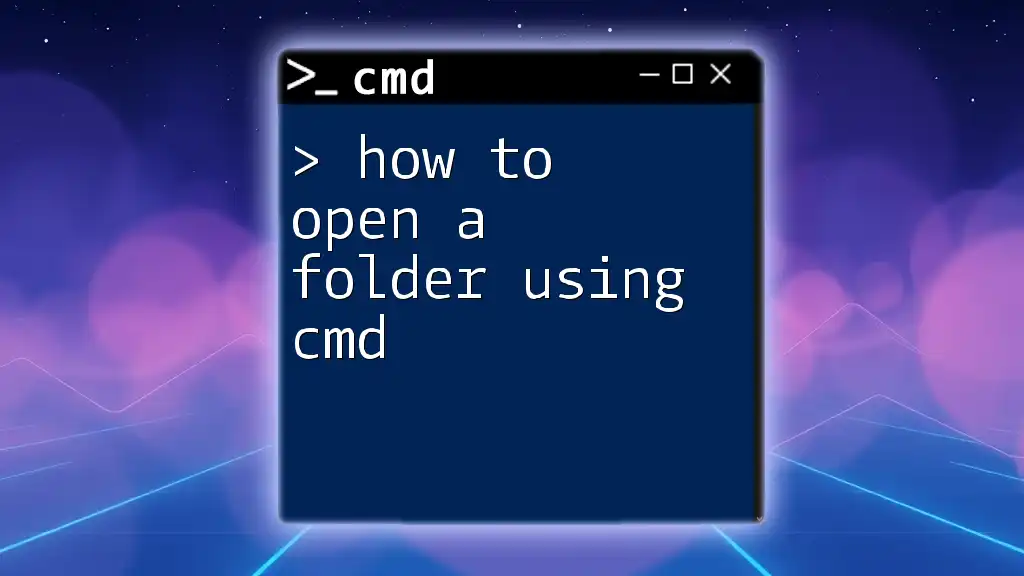
Opening Folders in CMD via Context Menu
Right-Click Method
Windows also allows you to open CMD in any folder directly from the GUI. You can utilize this feature for ease of access.
To open CMD in a specific folder:
- Hold the `Shift` key, then right-click on the folder you want to access.
- Select "Open command window here" from the context menu.
This method effectively circumvents the need to type out paths, allowing you to jump straight into your desired directory.
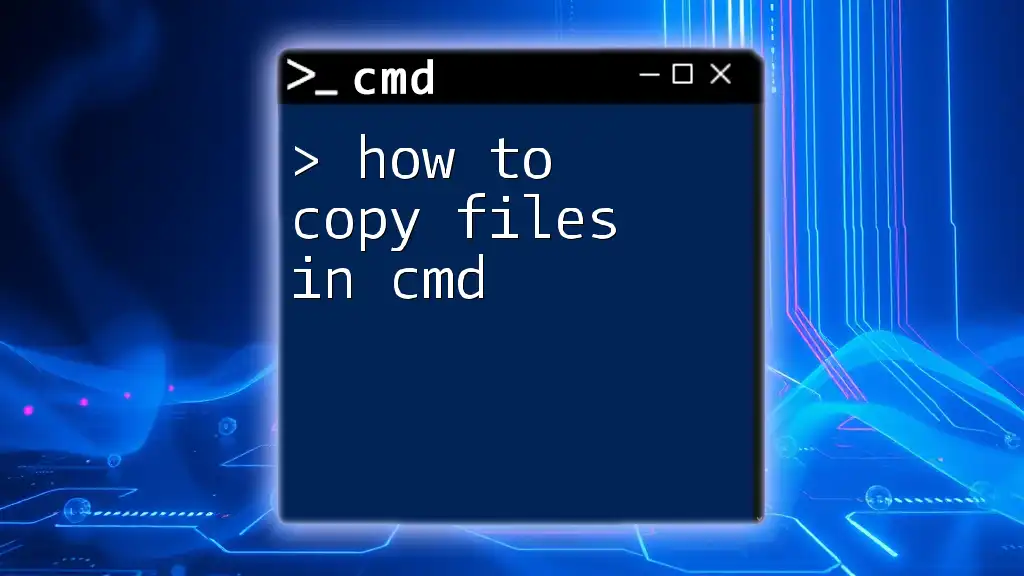
Creating Shortcuts for Quick Access
Batch Files for Frequent Folders
If you often find yourself accessing the same folders, creating batch files can streamline your workflow. A batch file is a simple text file with commands that can be executed as a script.
Here’s an example of a batch script that opens a frequently used folder:
@echo off
cd "C:\MyFolder"
start .
When you run this batch file, it will open the specified folder in Windows Explorer.
Using the Command History
CMD also features a command history that allows you to recall previous commands using the up and down arrow keys. This is useful for quickly navigating back to folders you've accessed recently without retyping the entire command.
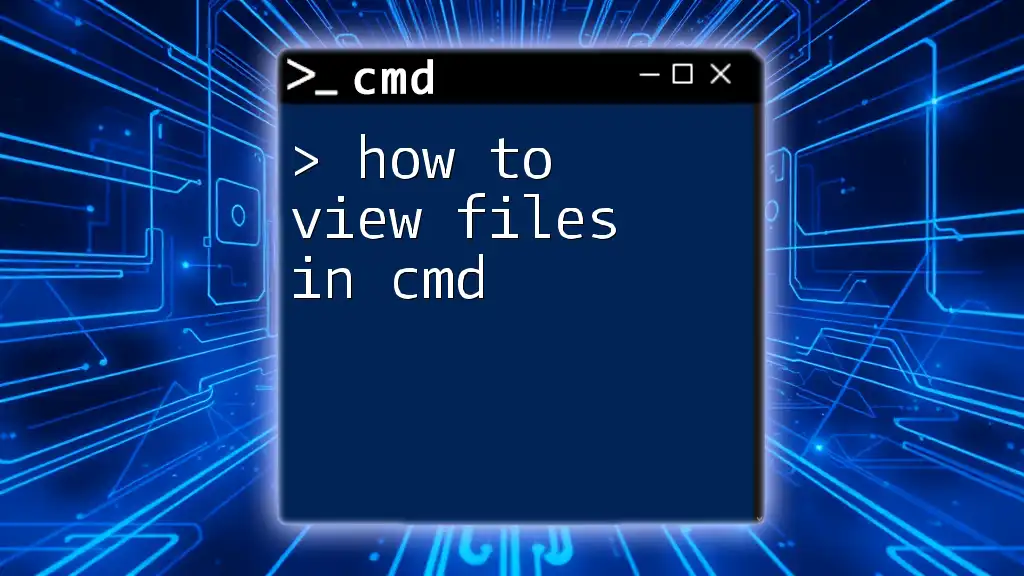
Troubleshooting Common Issues
CMD Not Recognizing Command
Should you encounter a situation where CMD fails to recognize your command, double-check that you have typed it correctly and that you're in the right directory. Ensure CMD is not running into issues caused by a restricted command set or lack of permissions.
Access Denied Errors
If you continually face access denied errors, it may indicate that the folder requires elevated permissions. In such cases, try launching CMD as an administrator (right-click CMD and select "Run as administrator").
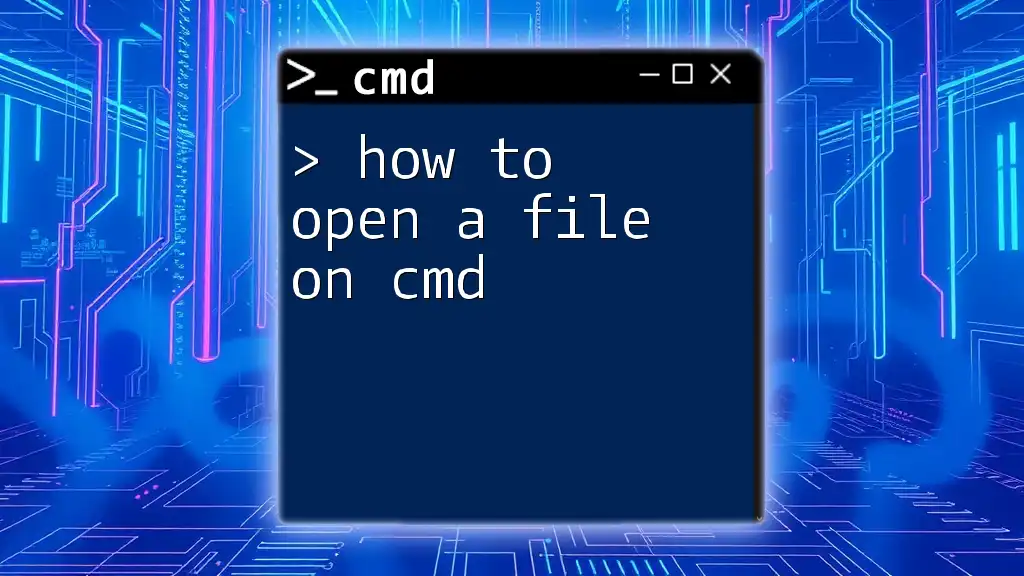
Summary
To open a folder in CMD effectively, knowing how to use the `cd` command along with path syntax is crucial. Commands like `cd %USERPROFILE%\Documents` provide quick access to commonly used directories, while features such as Tab completion and batch scripts enhance efficiency. By troubleshooting potential issues, such as path errors and permission problems, you can wield CMD commands confidently and navigate your system like a pro.
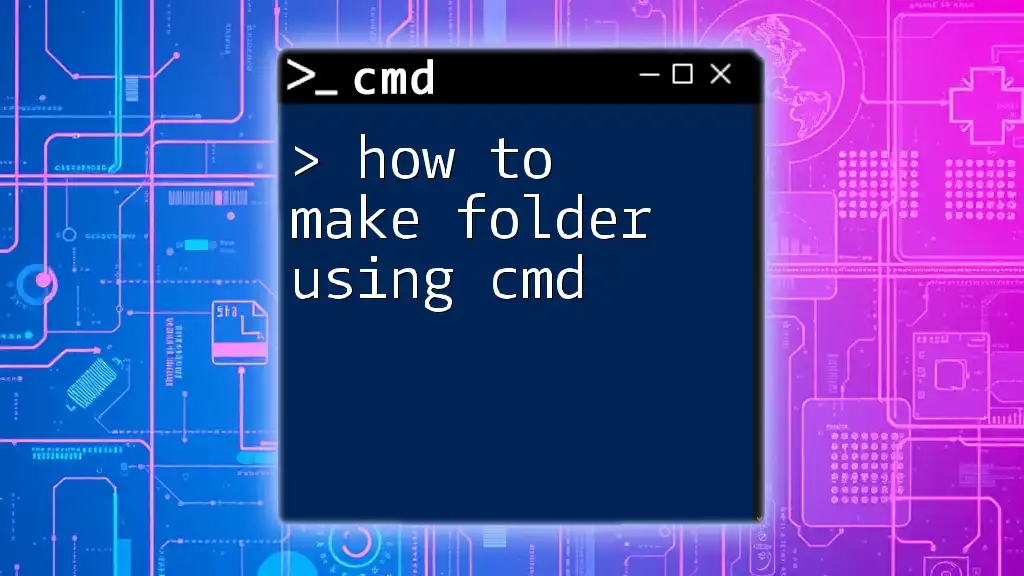
Additional Resources
For those looking to dive deeper, consider exploring other CMD command guides available online and recommended reading materials to further enhance your command-line skills. Mastery of CMD can transform the way you manage files and interact with your Windows operating system, making it a valuable skill for anyone interested in tech or IT.

